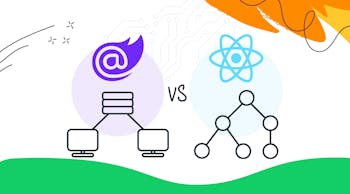Even if your business is currently operating as smoothly as a fresh jar of Skippy peanut butter, it still has the potential to run a little better.
Or, in some cases, a lot better.
We set up processes in business to keep things moving forward, but momentum and old habits can keep us following those processes even when they’re not the most effective. One way to combat this is through continual process improvement. It’s a way to formalize efforts within your organization to kick those inefficiencies to the curb and find ways of doing things more efficiently and effectively.
Neat, right?
We kind of think so.
But how do you even begin that whole continual process improvement thing? What process improvement methodologies will work best for you and your organization, yielding the most results and giving you that clear and distinct advantage?
If you don’t know the answers to these questions, don’t worry! That’s what we’re here for.
We’ve put together a brief guide of some of the best process improvement methodologies and techniques out there to help get you started.
What Is Process Improvement?
Before we dive into the nitty gritty of process improvement methodologies, it’s important to understand what process improvement is.
To put it simply, process improvement is the practice of identifying, analyzing, and improving existing business processes to optimize performance, meet best practice standards, or simply improve the quality and user experience for both customers and end-users.
Process improvement can go by several different names, including things like business process management (BPM), business process improvement (BPI), business process re-engineering, and continual improvement process (CIP), to name just a few.
Regardless of what it’s called, they all have the same end goal: to minimize errors, reduce waste, improve productivity, and streamline efficiency.
All things we’re really big fans of.
Benefits of Process Improvement
Another thing we’re a really big fan of? Implementing business practices that give us an avenue to spot and improve challenges in our processes.
*Hint: that’s exactly what process improvement does*
These challenges could be hurting your customer experience, internal production, or other business goals. Broken or inefficient processes can cost your team time and cost your business money. By putting a process improvement method in place, you can ensure you’re always looking for and addressing these things.
Top 10 Process Improvement Methodologies and Techniques
We now know what process improvement is and the benefits it provides you and your business. But which process improvement methodology or technique is the right one for you?
The good news is there are several different methodologies and techniques designed to help your organization tackle process improvement. Each aims to help your business identify process issues, fix them, and analyze the success or failure of those changes.
Despite that common goal, however, each methodology and technique suits a different need. Some frameworks focus on lean process improvement while others focus on getting your company culture in the right place. There are also methodologies that help companies visually map out process workflows if that’s something you want and/or need.
Here are the Top 10 Process Improvement Methodologies and Techniques we’ve found (and have used) that might be perfect for you:
1. Kaizen
Kaizen promotes continuous improvement with a strong emphasis on lean and agile practices. Kaizen focuses on improving quality, productivity, and efficiency through small shifts in daily work or corporate culture to foster an environment that doesn’t punish errors or mistakes, but instead works to prevent them from happening again.
2. Lean Methodology
As the name suggests, Lean Methodology strives to continually improve a process by eliminating waste. No, we’re not talking about that candy wrapper you’ve had hidden in your coat pocket for the last year (although you should probably just go ahead and get rid of that). Waste here implies things like processes, activities, and products or services that require time, money, or skills that don’t create any value for the customer.
Removing these inefficiencies should streamline services, cut those pesky costs, and ultimately provide savings for a specific product or service through the supply chain to the customer.
3. Six Sigma
Besides being an epic band name, Six Sigma is a popular process improvement methodology that aims to minimize errors and maximize value across industries by leveraging data and statistics. One unique thing about Six Sigma is it pulls workers up through ranks using the same classification as karate belts. You start as a green belt and learn your way up to a black belt. Six Sigma also breaks down process improvement through specific steps. These steps include DMAIC (define, measure, analyze, improve and control) and DMAIC (define, measure, analyze, design, and verify).
4. PDCA
Also part of the Kaizen methodology, PDCA stands for plan, do, check, and act. It helps organizations be more efficient when identifying processes that need improvement. You first identify the problem (plan), create and implement a solution (do), evaluate data for effectiveness (check) then document the final results and implement the plan if it’s successful (act).
5. Cause and Effect Analysis
Another tool born from Six Sigma is Cause and Effect Analysis. This technique involves using a diagramming method to fix problems the first time by identifying the problem, discovering roadblocks, and pinpointing why the process isn’t working.
6. Just-in-Time
Just-In-Time manufacturing, also known as the Toyota Production System, aims at minimizing inventory costs and increasing efficiency by producing goods as per the requirement. Toyota executives invented this concept with a vision to adapt quickly and efficiently to changes in demand for models and reduce losses by keeping inventory in-store that was immediately needed.
It promotes a "pull" strategy instead of a "push" strategy. It’s often implemented with the Kanban methodology to avoid overcapacity of work and requires accurate forecasting along with steady production for success.
7. Value Stream Mapping (VSM)
Value Stream Mapping (VSM) helps organizations visually represent customers’ perceptions of a business process. This helps to identify the value of a product, process, or service to the organization. Similar to other methodologies, it’s highly focused on eliminating waste, redundancy, and being as lean as possible.
8. Total Quality Management (TQM)
Focused on cultivating long-term success through customer satisfaction, Total Quality Management (TQM) helps organizations get the entire company on board with continuous process improvement. It’s a methodology that empowers workers by fostering a culture where employees aren’t afraid to make mistakes and are driven towards a shared business goal.
9. Kanban
Kanban is a tool for process workflow visualization that gets business units, leadership, and employees all on the same page for process improvement. It’s another methodology that incorporates and encourages lean process improvement.
Work is represented on Kanban boards, allowing you to optimize work delivery across multiple teams and handle even the most complex projects in a single environment.
10. Process Mapping
Process mapping is another workflow visualization technique that helps companies map out a plan from start to finish for process improvement. The visualization can be in the form of a process flowchart, functional flowchart, and process model. You can create process maps specific to roles or business goals to analyze your organization’s activities to improve productivity.
Key Takeaways
Implementing process improvement methodologies and techniques like the ones mentioned above is a great way to stay competitive, relevant, and efficiently moving forward. The business processes need to be updated regularly and continuously to ensure that your organization can operate with minimum operating costs and maximum efficiency.
Ready to get started on your process improvement journey? Contact our experts at Inventive today and let us help put you on the path to optimal growth and continuous improvement!









